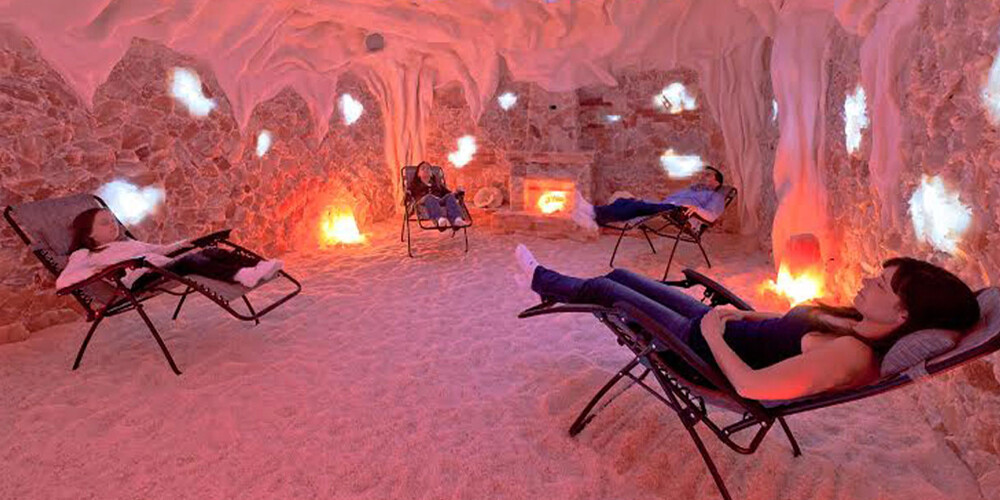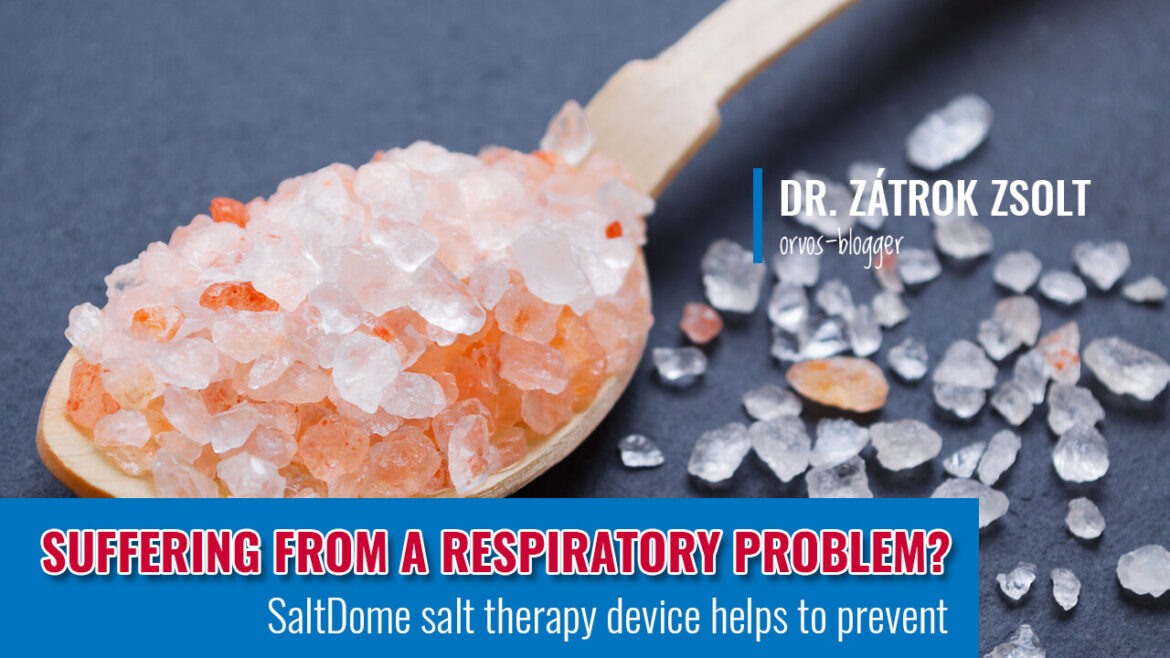Salt therapy is a medically accepted method of healing and preventing disease. It is most widely used in Eastern and Central Europe. It was known as early as the ancient Greeks. Hippocrates, the father of medicine, recommended the inhalation of salt water vapour for people suffering from breathing difficulties. It is excellent for respiratory and skin diseases and allergies.
What is salt therapy?
Salt therapy is nothing more than breathing in air rich in salt. The salt particles that enter your lungs stick to the walls of your airways where they naturally exert their beneficial effects.
The healing properties of salt cave air have been known and used in European medicine since the 1800s. Many people make a “pilgrimage” to salt mines in Transylvania, Poland, Slovakia, etc. Beach holidays are also recommended for lung diseases, allergies and certain skin conditions because of the high salt content of the air.
Away from salt caves and beaches, artificial salt caves and salt rooms are being built to create similar conditions. In simple salt rooms, the walls are covered with salt bricks. But the salt does not ‘jump out’ of the bricks themselves. The efficiency of such salt rooms is low. In modern halotherapy chambers, salt bricks are only decorative. A machine produces the salt air vapour and blows it into the room’s air. This creates conditions almost identical to natural ones but the room itself is for show.
You don’t have to miss out on the benefits of salt therapy even if there are no natural or built salt rooms in your area. Today, you can buy a variety of salt therapy equipment.

Salt therapy room in a natural salt cave. Stay in the “good air” for a long time – Torda, Romania
When can you expect positive effects?
The salt particles enter the lungs to a depth that depends on their size. Particles larger than 8 micrometres “stop” in your mouth and throat, while particles between 5-8 micrometres deposit in the large airways. Only salt particles smaller than 5 micrometres get deep enough into the lungs to have a significant effect. From a therapeutic point of view, therefore, the smallest possible particle size is the most effective.
The longer the duration of salt therapy, i.e. the longer you are in the salt air, the more salt is in your lungs and the stronger the effect. A treatment or two a month is good for relaxation. You can’t expect any real effect from infrequent and short treatments.
This is also the disadvantage of built-in salt rooms. While they would be an excellent option, you must travel to them, pay for them, and they cannot be used for as long as they should be. Medical technology manufacturers have created devices that allow you to produce therapeutic salt air in a home environment.
I’ve already mentioned that you can expect the best effects if you spend several hours a day in a salt bath. You come and go during the day, so you spend little time in one place. But at night, when you sleep, you stay in one place. This is the best time for salt therapy. The device works quietly on the bedside table. It envelops you in a beneficial “salt-cloud”. Plenty of it gets into your airways. If your work is desk-bound, a device placed on the corner of your desk will give similar results.
[message title=”SaltDome Salt Therapy Device” title_color=”#ffffff” title_bg=”#1e73be” title_icon=”” content_color=”#000000″ content_bg=”#ededed” id=””]
- ultrasonic atomization
- 1, 3, 6 hours or continuous operation
- particles of salt smaller than 5 microns
- two-stage vapour production
- colour therapy
- for home and work use
The effects of salt therapy
Particles of salt stick to the mucous membrane of the airways. It acts as a “solvent” to loosen mucus stuck in the airways. It reduces viscosity and makes it easier to clear mucus from the airways. Supports self-cleansing processes. The mucus also removes pollutants trapped in the airways.
Natural salt crystals have an antiseptic effect, killing most viruses, bacteria and fungi.
Salt improves the physical and biochemical activity of the body, enhancing metabolism and peripheral circulation. It reduces swelling of mucous membranes, dissolves mucus. Acts as a natural antihistamine (reduces allergic reaction), reduces inflammation.
In cases of upper respiratory tract inflammation (e.g. rhinitis, bronchitis, sinusitis, etc.), it speeds up healing by dissolving and clearing phlegm.
What conditions does salt therapy help?
Salt therapy is an expectorant, antiseptic and anti-inflammatory. In mild cases of colds and allergies, it is sufficient on its own to relieve symptoms.
Using salt therapy as a preventive measure can help to avoid a range of illnesses and reduce the frequency of infections or flare-ups.A 2012 study showed that salt therapy in children can reduce the incidence of upper respiratory illnesses (colds, croup, sinus infections, etc.).
It can be used to complement medical treatment for acute and chronic conditions, as listed below. It strengthens the effect of medical treatment and accelerates the healing process.
Effective in children and adults alike! It is completely risk-free.
Do not use salt therapy during the first few days of pneumonia with fever. Consider pros and cons in case of high blood pressure.
Respiratory diseases
- chronic obstructive bronchitis (COPD)
- chronic sinusitis
- painful, dry cough (especially at night or after physical activity)
- mucus in the airways
- colds, nasal congestion
- airway allergies
- pulmonary oedema, croup
- acute bronchitis
- acute tonsillitis
- mucosal inflammation, pharyngitis
- pneumonia (start salt therapy only a few days after the acute onset)
- Pneumodilatation (emphysema)
- flu and other respiratory viral infections
- coughing and dyspnoea in smokers
skin disorders
- Allergies caused by industrial and household allergens
- eczema
- psoriasis
- neurodermatitis

